Are you hearing something when you step on the brakes? It can prove to be not only irritating but may be a sign of trouble and danger ahead. Some drivers ignore these brake noises and end up paying more for repairs or, worse, get into an accident.
Of course, having problems with your brakes can severely compromise your safety. What to do? Visit your trusted mechanic or shop to have your car inspected. In this article from Philkotse.com, you can learn a few tips on what to do if you hear something off from your brakes.
Step #1: Control your driving
This is the very simple and ideal solution to your problem especially if the brake noise happens only under heavy braking. Heavy loads, steep declines, or frequent hard braking can cause this. When driving down steep grades, shift to a lower gear instead of overworking your brakes.
Always maintain a safe distance between vehicles in order to avoid suddenly stepping hard on the brakes. Lastly, decrease the car’s load weight if possible.
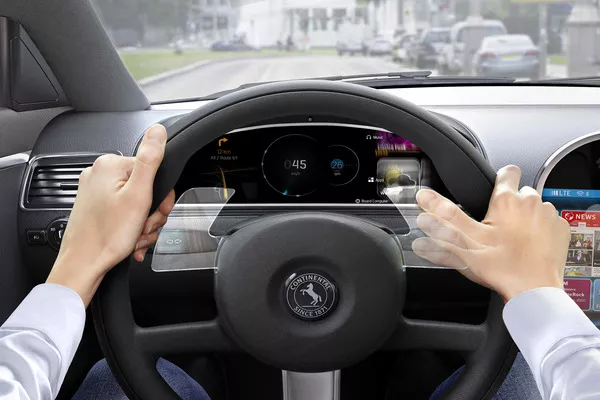
When driving down steep grades, shift to a lower gear instead of overworking your brakes
Step #2. Inspect for any loose parts
Shake the calipers, brake pads, and other components of your brake and see if there is any movement. If it moves, this might be the cause of the noise because of the loose parts. If you see any loose or damaged clips or shims, tighten or replace with a new one.
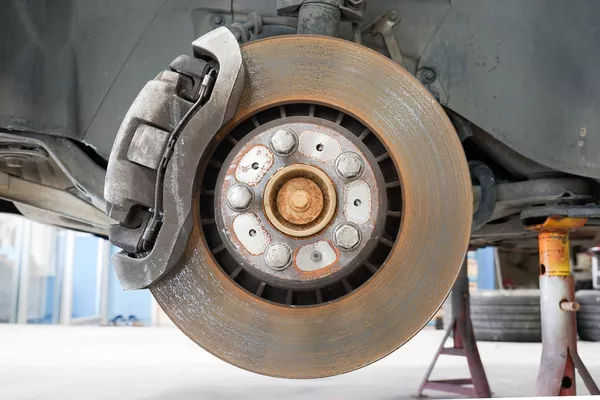
Loose parts might be the cause of noise
>>> Read more:
Step #3: Apply a damping paste
A damping paste is used to remove or damp the noise due to vibration and other factors. Put the paste in between the caliper assembly and the brake pad. Wait for a few hours, if possible overnight, for the paste to fully dry.
After that, reassemble the brakes. You can use a hair dryer in order to dry the paste faster. However, don’t forget to cool it to room temperature before you put the pads. Use a brake cleaner or degreaser to remove the damping paste.
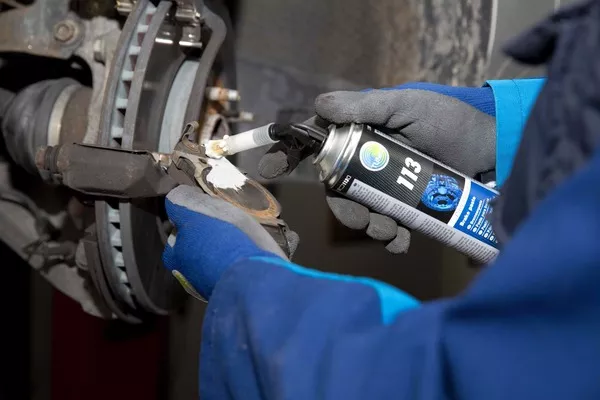
Damping paste is used to remove or damp the noise due to vibration and other things
Step #4: Examine the brake pads and look for wear and contamination
Some disk brakes come with a wear indicator that produces noise if the length of the wear exceeds the set point. Replace the brake pads if they are already worn out. Make sure that the size of the pads you are installing is the same as the original ones.
The rotor can be damaged if you don’t replace the worn-out pads or if you put in incompatible ones. The rotor is more costly to change or fix. On the other hand, if the wear is within the allowed limit, you can eliminate the noise through the use of the sandpaper.
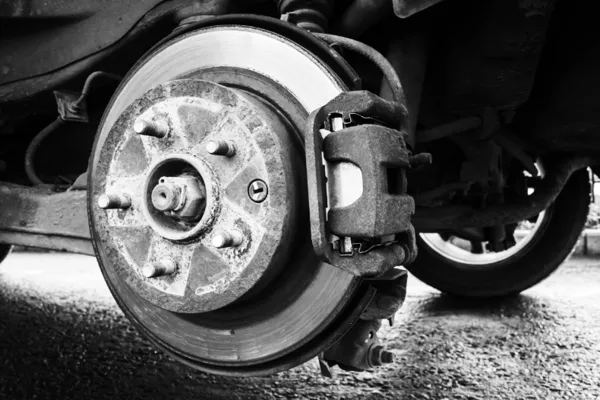
Make sure that the size of the pads you are installing is the same as the original ones
Step #5: Test different materials for replacement pads
You can try which one is best for your car. But it is still best to use the original equipment manufacturer type. You can also refer to the manufacturer’s recommendation in your vehicle’s manual. Check out some of the different brake pads.
Organic Pad
It can be quieter than others but it lacks wear resistance and performance. It also cannot tolerate heat which can cause reduced brake effectiveness.
Semi-metallic pad
It contains organic material and metal particles. This pad boasts the best braking ability and is not noisy. It decreases brake fade while increasing the pad life.
Metallic pad
This is good at stopping at high speeds, having more noise but minimum wear.
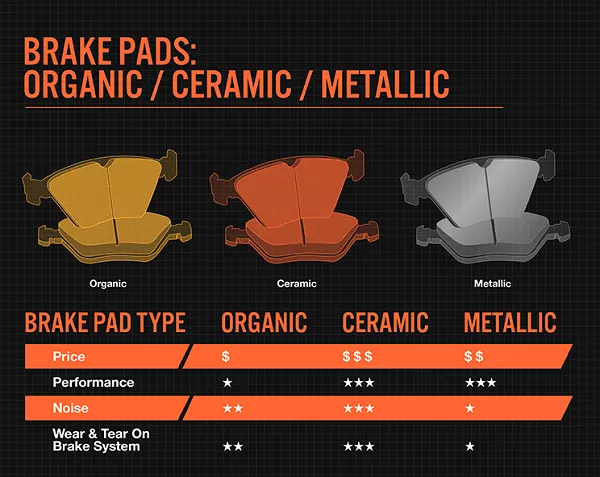
There are different brake pad materials available
Step #6: Look for any signs of wear, grooving, and scoring in the drum or brake rotor
An uneven drum surface or brake rotor can cause jumping and chattering of the brake pad into the caliper and brake assembly. Using a comparator gauge, visually check the surface smoothness. You can also try using a ballpen to check the surface.
If you get a rough line, it means that the rotor is too rough or greasy. Smooth the surface using a rotor lathe if the wear is not that deep. Ask for help from the nearest local shop to do the job. It is better to resurface the rotors using a round lathe bit because the end product is smoother.
But if the rotor is already worn out, replacing it is the best option for you. Replace as early as possible because the brake system is designed to be noise-free.
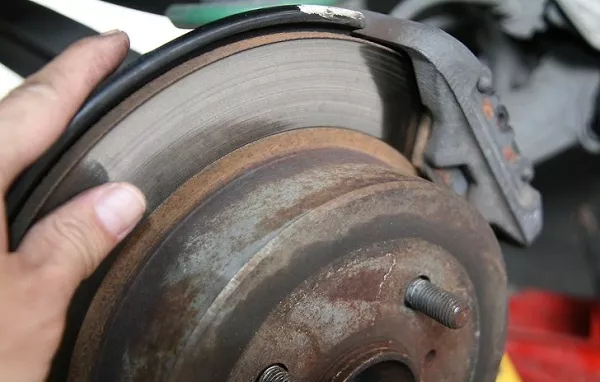
Scraping or squealing noises show that your brake pads are thinning out
>>> Worth your check: Things you might not know about brake pads and car rotors
Step #7: Check the contact points and apply lubrication using an anti-squeal compound
Brakes are like door hinges that we need to lubricate every now and then. These contact points will cause abnormal sounds when not properly lubricated.
Tips
For smooth operation, always lubricate brake the assembly, specifically the moving parts.
- Choose brake pads that have chamfered edges instead of square ones.
- Make it a habit to regularly check your brakes even there is no problem. You can personally inspect them or bring the car to your mechanic. Remember, prevention is better than cure. You can also save some money by preventing a bigger problem.
- Use the original brake hardware and brake pads as a replacement. If possible, avoid using aftermarket parts.
- Remove dirt or corrosion from the contact points whenever you are mounting any brake parts. Clean the sliding parts using a file or a wire brush until the pads can be pushed in and out using your hands.
Recent posts
- Pros & Cons of DIY car brake replacement Aug 16, 2022
- Car handbrake: Things you should keep in mind Apr 12, 2021
- Everything You Need To Know About Brake Fluid Aug 17, 2022
- How to use your car brakes properly Nov 07, 2018
- Do’s and Don’ts when car brakes fail Mar 17, 2021












